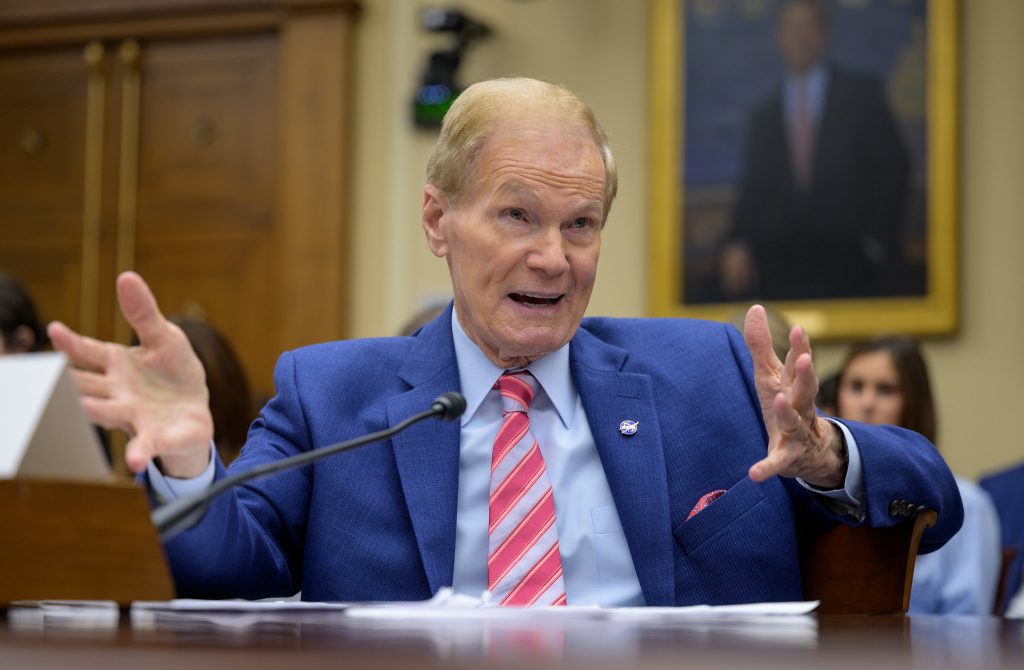WASHINGTON — NASA Administrator Bill Nelson urged a House committee to add funding for an ISS deorbit vehicle in a supplemental funding bill, saying that budget restrictions had led to cuts in agency programs.
During testimony to the House Science Committee on April 30, Nelson explained that overall spending limits were the reason for cuts in NASA's 2025 budget proposal, affecting programs from science missions to facility maintenance.
The spending caps, set for the 2024 and 2025 fiscal years, restrict non-defense discretionary spending as part of a deal made nearly a year ago to raise the debt ceiling. Nelson emphasized that NASA faced a $4.7 billion cut over the two years from its original request, impacting contracts at all NASA centers.
In its fiscal year 2024 budget request, NASA sought $27.185 billion and projected requesting $27.729 billion in 2025. However, NASA received $24.875 billion for 2024 and is seeking $25.384 billion in 2025, a difference of nearly $4.7 billion from initial projections.
Nelson consistently pointed to the spending caps when asked about reconsidering program cuts, indicating that relief might only come after the caps expire in fiscal year 2026. He expressed hope that by 2026, Congress might recognize the value of certain programs.
He urged members to fully fund the United States Deorbit Vehicle (USDV), a spacecraft NASA plans to develop for the final deorbiting of the International Space Station at the end of its life, through a supplemental spending bill.
For the USDV, NASA had requested $180 million in its 2024 budget and $109 million in the 2025 request. Nelson, however, urged members to secure full funding for the vehicle as part of an emergency supplemental spending bill proposed by the White House, but not yet considered by Congress.
He questioned why it was considered an emergency, suggesting uncertainty over Russia's intentions. He warned that Russia might end its role on the ISS early or choose not to participate in the controlled deorbiting of the station, creating a potential emergency situation for safely bringing down the massive structure by 2031.
He suggested that Russia might end its involvement in the ISS prematurely or decline to take part in the controlled deorbiting of the station. He emphasized the potential emergency situation of needing to safely bring down the football stadium-sized structure, particularly in light of uncertainty regarding the actions of the Russian president.
He pleaded with Congress during the hearing to include full funding for the USDV in the next emergency appropriations bill, emphasizing a total of $1.5 billion, significantly higher than the amount mentioned when the USDV was first announced in March 2023. when the agency projected spending “a little bit short of $1 billion” on the vehicle. NASA has yet to award a contract for building the USDV.
Nelson expressed confidence that industry and agency teams could find ways to reduce the $11 billion cost of the Mars Sample Return (MSR) program and bring back samples before 2040. the current estimate from a recent agency review.
Before the hearing, Nelson had a discussion with Laurie Leshin, the director of the Jet Propulsion Laboratory, about JPL's reviews of MSR. He mentioned that JPL was enthusiastic about generating new ideas, possibly involving smaller landers with the same successful “skycrane” landing system used for the Curiosity and Perseverance rovers.
While NASA is seeking ways to lower the cost of MSR, the agency has not set a goal for its internal or external studies, which agency officials said was a deliberate omission. Sandra Connelly, deputy associate administrator for science at NASA, emphasized the need for thorough analysis and real solutions at an April 24 meeting of the Mars Exploration Program Analysis Group.
Nelson mentioned that past independent reviews suggested the cost should not exceed approximately $6 billion for MSR.
Nelson also responded to a recent report that NASA was reconsidering the plan for the Artemis 3 mission, which currently will be the first crewed lunar landing of the effort. According to the report, NASA was studying having Orion dock with a SpaceX Starship lunar lander in Earth orbit, deferring a landing to a later mission.
Nelson dismissed the speculation about changes to the Artemis 3 mission, emphasizing that the plan is to proceed with the scheduled landing and stating that SpaceX is under contract to carry out the landing in September 2026, the current no-earlier-than date for Artemis 3.
He added that if SpaceX is not ready, the mission will not proceed as planned.









